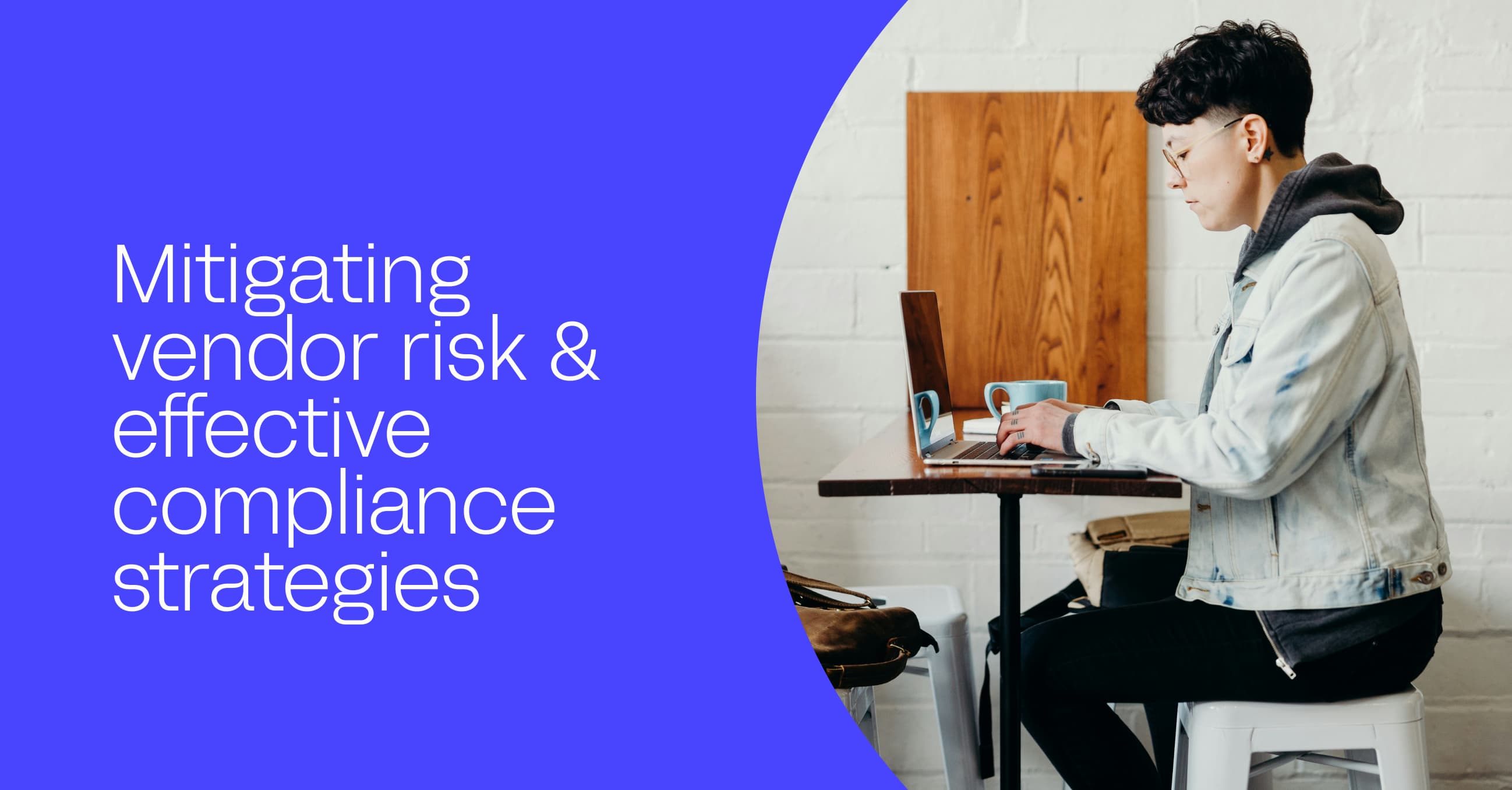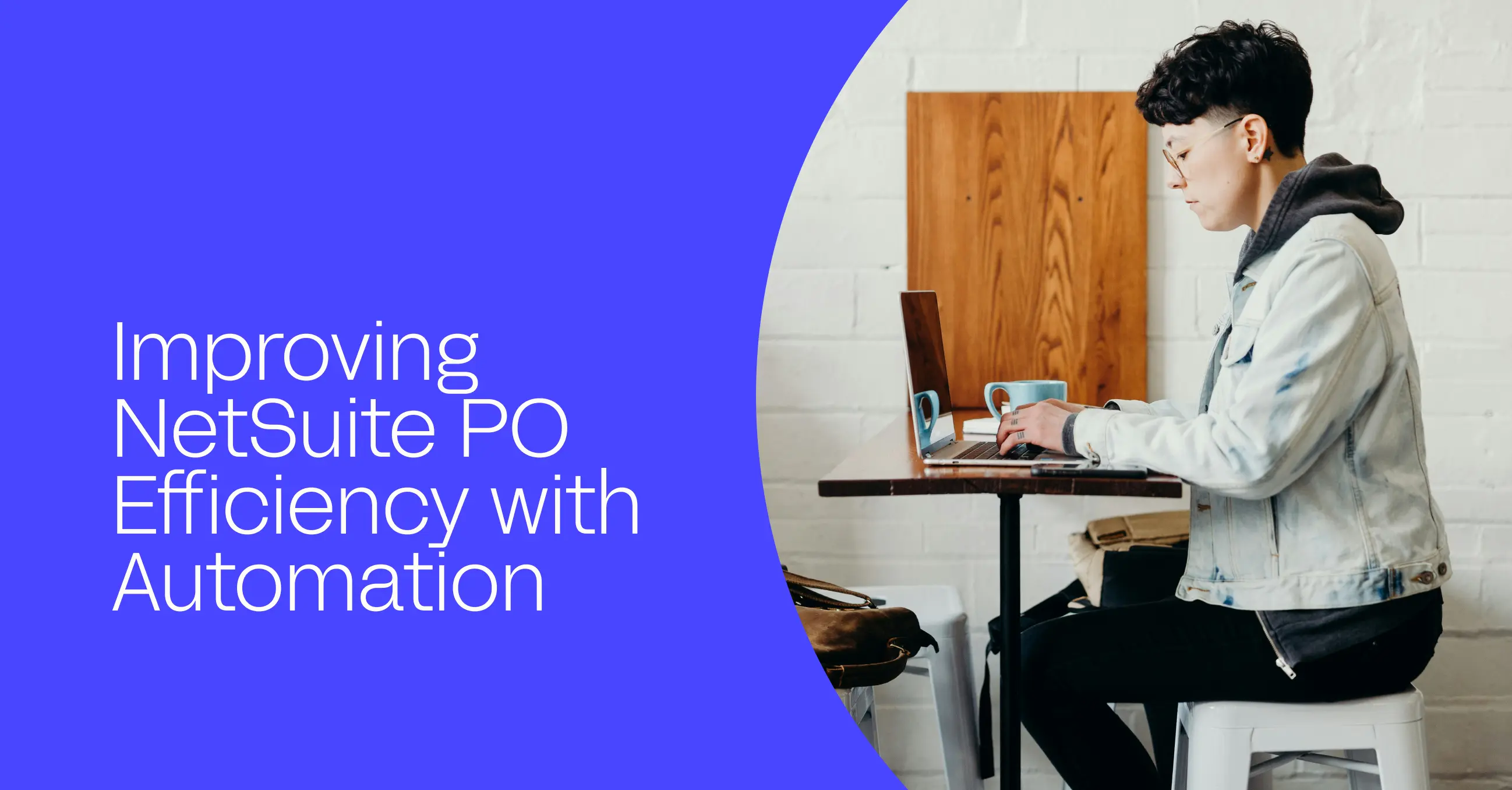As businesses increasingly rely on external vendors, contractors, and suppliers, the potential for missteps also grows. While seemingly easy to work with, one or two unscrupulous vendors can pose significant risks to your business.
Failure to assess compliance, fraud, and financial risks for vendors can severely affect your business’s stability. It can lead to audits and penalties, significant financial losses, and damage to your business’s reputation and credibility. This underscores the critical importance of vendor compliance in mitigating risks, safeguarding reputations, and ensuring smooth operations.
In this post, we’ll explore vendor risk management, why it’s essential, and provide actionable strategies for effective vendor compliance.
What is vendor risk management?
Vendor risk management is a comprehensive process focusing on the tools and procedures necessary to assess and monitor the potential risks of engaging with third-party vendors. These checks encompass various risk factors, including regulation compliance, financial stability, and the potential for fraudulent activities. By thoroughly evaluating vendors, businesses can make informed decisions about which partnerships to pursue and how to manage those relationships effectively.
Why is vendor compliance crucial for businesses?
There are several compelling reasons why your business should prioritize vendor risk management:
-
Protect against financial losses: By identifying and mitigating potential risks, companies can avoid the financial losses resulting from vendor-related issues, such as fraud or non-performance.
-
Maintain regulatory compliance: Many industries are subject to strict third-party relationship regulations. Vendor risk management helps businesses comply with these regulations, avoiding costly penalties and legal consequences.
-
Safeguard against fraud: Due to the massive volume of payments businesses make, vendors can easily submit fraudulent invoices that overcharge and cost your business more money.
Benefits of implementing vendor risk management solutions
Mitigating financial risks
One of the key advantages of vendor risk management is its potential to mitigate financial risks. By thoroughly vetting vendors and monitoring their ongoing performance, businesses can:
-
Prevent fraudulent activities: Identify and avoid vendors with a history of fraudulent behavior, reducing the likelihood of financial losses due to scams or other illicit activities.
-
Reduce exposure to financial losses: Minimize the risk of engaging with vendors who are financially unstable or likely to default on their obligations.
-
Avoid penalties and fines: Ensure compliance with regulations and industry standards, preventing costly penalties and legal fees.
Enhancing compliance
Vendor risk management is critical in helping businesses maintain compliance with a wide range of regulations and standards. By implementing effective risk management processes, companies can:
-
Meet regulatory requirements: Ensure vendor relationships adhere to applicable laws and regulations, such as anti-money laundering (AML) and know your customer (KYC) requirements.
-
Ensure accurate tax filing: Verify vendor information, TINs, and tax status to prevent errors and discrepancies in tax reporting.
-
Avoid tax-related complications: Identify and address potential tax issues before they result in penalties or legal disputes.
Streamlining vendor management
Implementing effective vendor risk management can significantly streamline your vendor management process, improving efficiency and productivity. By centralizing vendor information, automating risk assessment processes, and improving overall operational efficiency, you can manage your vendor relationships more effectively and save time and money.
-
Centralize vendor information: Create a comprehensive database of vendor data to facilitate the access and management of critical information.
-
Work with verified vendors: Run risk checks while onboarding a vendor and before sending a payment
-
Automate risk assessment processes: Leverage technology to automate many manual tasks involved in vendor risk assessment, reducing the time and effort required.
-
Improve overall operational efficiency: Streamlining vendor onboarding, monitoring, and compliance processes, enabling businesses to manage vendor relationships more effectively.
Saving time and money
By implementing vendor risk management as part of your overall AP Automation solution, businesses can realize significant time and cost savings. Specific benefits include:
-
Consolidating compliance and risk management workflows: Integrating vendor risk management with existing AP automation systems, eliminating the need for separate, manual processes.
-
Eliminating the need for third-party compliance services: You can reduce reliance on expensive third-party risk management services.
-
Reducing overhead while maintaining compliance standards: Achieving a balance between cost savings and effective risk management, ensuring that businesses can operate efficiently without compromising compliance.
Key components of effective vendor risk management
Due diligence process
The foundation of effective vendor risk management lies in a robust due diligence process. This process involves:
-
Gathering vendor information: Collecting comprehensive data on potential vendors, including their business registration and references.
-
Verifying legal entity status: Confirming that vendors are properly registered and in good standing with relevant authorities.
-
Screening against watchlists and sanctions lists: Checking vendors against various lists of individuals and entities associated with illegal activities, such as money laundering or terrorism financing.
Risk assessment
Once the necessary vendor information has been collected, the next step is to conduct a thorough risk assessment. This involves:
-
Identifying potential risk factors: Analyzing the vendor’s background, financial stability, and business practices to pinpoint areas of concern.
-
Evaluating the likelihood and impact of risks: Assessing the probability of each identified risk occurring and the potential consequences for the business.
-
Determining risk levels: Categorizing vendors as low, medium, or high risk based on the assessment results.
-
Avoiding tax-related complications: Verifying vendor information upfront ensures accurate data for tax filing purposes and averts withholding obligations, leading to smoother and more compliant tax processes.
Ongoing monitoring
Vendor risk management isn’t a one-time event but an ongoing process requiring continuous monitoring. This is crucial because vendors’ risk profiles can change over time. By identifying these changes and adjusting your monitoring frequency based on risk levels, you can quickly mitigate potential issues and protect your business.
-
Identify changes in vendor risk profiles: Regularly reassess vendors to detect any changes in their risk levels over time.
-
Implement alerting mechanisms: Setting up automated alerts to notify relevant parties when a vendor’s risk status changes, enabling quick action to prevent payments to risky vendors.
The hidden benefits of integrating vendor risk with AP Automation
Many businesses struggle to implement effective risk management processes. This presents a great opportunity for businesses to adopt a more comprehensive and streamlined approach to vendor risk management. By integrating vendor risk checks with accounts payable (AP) automation, companies can leverage a powerful, all-in-one solution that simplifies vendor management and reduces risk exposure when paying vendors.
These enable:
-
Cascading warnings throughout the AP process: Ensure compliance warnings are visible throughout the AP process, from invoice receipt to payment approval.
-
Blocking payments to non-compliant vendors: Preventing payments from being issued to vendors who fail to meet compliance standards, mitigating the risk of financial losses and legal issues.
Examples of vendor risk checks + AP Automation in action
How does vendor risk management work when combined with AP Automation? To make the process easier to understand, let’s look at the examples below:
Payable creation and warnings
-
When creating payables for risky vendors, warnings are triggered.
-
Warnings are displayed throughout the AP product when going through approvals or making payments
-
Payables can still be approved and scheduled but might be paused if compliance issues are not resolved before initiation.
Bulk compliance checks
-
Run compliance checks on all unevaluated vendors with a single click.
-
Vendors are queued, and their EIN, SSN, TIN, and Watchlist status are evaluated, saving time and effort.
Tax compliance
-
Avoid tax-related issues by verifying vendor information upfront
-
Monitor changes to a vendor’s TIN, legal name, and address to ensure all tax records are accurate
Payment initiation and compliance holds
-
If a payment is initiated to a non-compliant vendor, the payment is blocked.
-
The payable is placed into a “Compliance Hold” status until the compliance issues are resolved.
-
Once the issues are addressed, payments automatically initiate, ensuring compliance.
Conclusion
Effective vendor risk management is a necessity. With it, businesses can protect themselves from risks, including financial losses, compliance issues, and reputational damage.
Learn more about Routable’s Vendor Compliance Checks.
FAQs
What is supplier compliance?
Supplier compliance refers to the adherence of vendors or suppliers to specific standards and regulations set by a company or industry. It ensures that vendors meet requirements for quality, safety, ethics, and other factors deemed necessary by the organization.
What is the risk matrix for vendors?
A vendor risk matrix is a tool used to assess and prioritize potential risks associated with engaging third-party vendors. It typically consists of a grid that plots the likelihood of a risk occurring against the potential impact of that risk. The matrix helps businesses identify which vendor risks require the most attention and resources to mitigate.
What makes a vendor high-risk?
A vendor may be considered high risk if they have a history of financial instability, non-compliance with regulations, or involvement in unethical or illegal activities. Other factors contributing to a high-risk classification include handling sensitive data, operating in a high-risk industry, or being located in a country with a less stable political or economic environment.
What are the risks of vendor relationship?
Engaging in vendor relationships can expose businesses to various risks, including financial losses due to non-performance or fraud, legal and regulatory compliance issues, and reputational damage resulting from a vendor’s unethical or illegal behavior. Additionally, vendors with access to sensitive data may pose cybersecurity and data privacy risks.
What is the difference between vendor risk and third-party risk?
Vendor risk and third-party risk are often used interchangeably, as vendors are a type of third party. However, third-party risk can encompass a broader range of external relationships, such as partnerships, affiliates, and service providers. In contrast, vendor risk specifically focuses on the risks associated with companies that provide goods or services to your organization.
What are the types of vendor risks?
Common types of vendor risks include financial risk (e.g., vendor bankruptcy or non-performance), operational risk (e.g., disruptions to the vendor’s ability to deliver goods or services), compliance risk (e.g., violations of laws or regulations), reputational risk (e.g., negative publicity associated with the vendor), and cybersecurity risk (e.g., data breaches or cyber-attacks).
What is the difference between vendor risk management and third-party risk management?
Vendor risk management is a subset of third-party risk management that focuses on identifying, assessing, and mitigating risks associated with vendors providing goods or services to an organization. Third-party risk management encompasses a broader scope, including managing risks related to all external parties an organization interacts with, such as partners, affiliates, and service providers.
What should be in a vendor risk assessment?
A comprehensive vendor risk assessment should evaluate the vendor’s financial stability, operational capabilities, compliance with relevant laws and regulations, and cybersecurity measures. It should also consider the vendor’s reputation, the nature of the goods or services provided, and the potential impact of a vendor-related incident on your organization. The assessment should be tailored to the specific risks associated with each vendor relationship.


